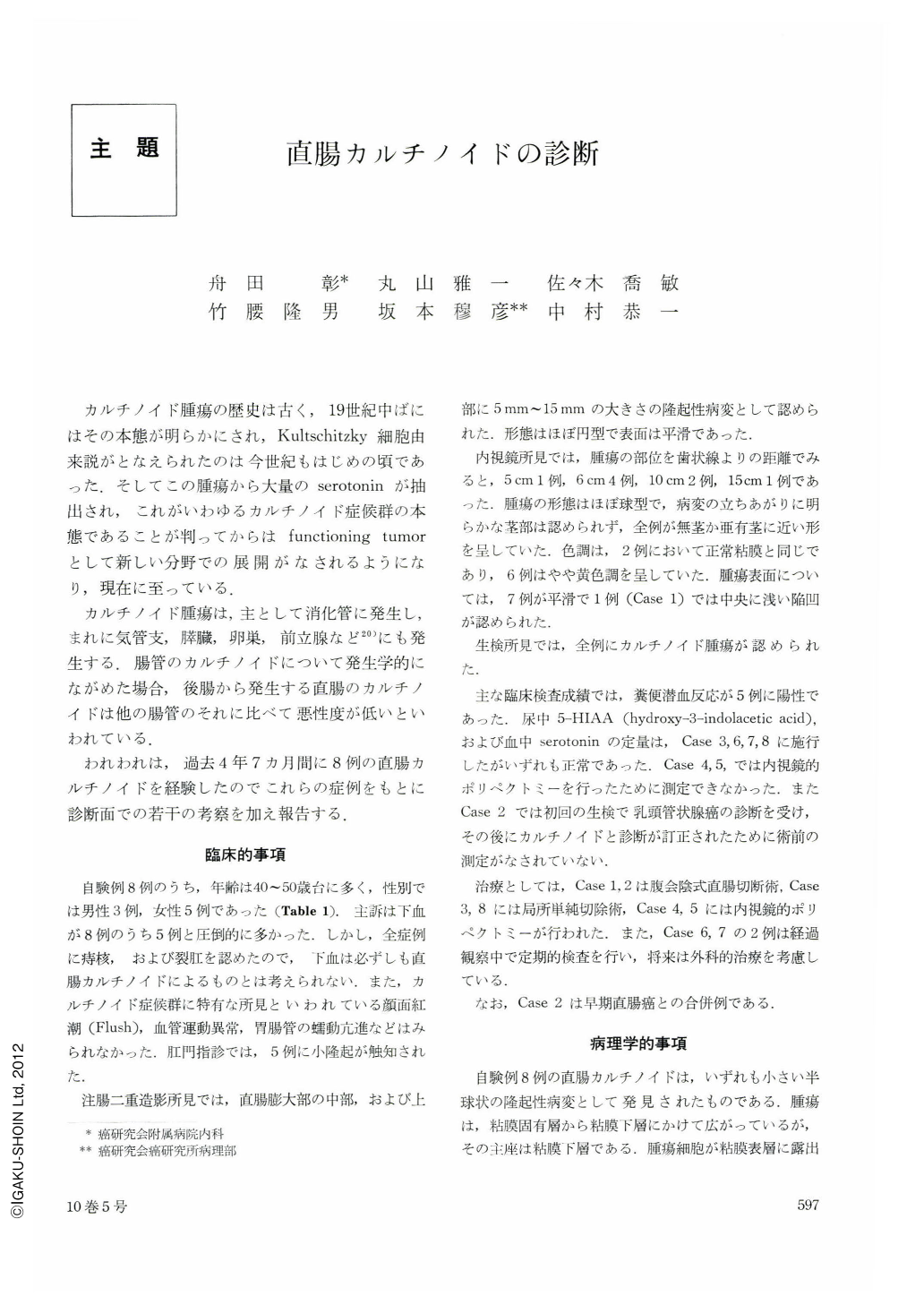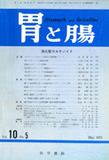Japanese
English
- 有料閲覧
- Abstract 文献概要
- 1ページ目 Look Inside
- サイト内被引用 Cited by
カルチノイド腫瘍の歴史は古く,19世紀中ばにはその本態が明らかにされ,Kultschitzky細胞由来説がとなえられたのは今世紀もはじめの頃であった.そしてこの腫瘍から大量のserotoninが抽出され,これがいわゆるカルチノイド症候群の本態であることが判ってからはfunctioning tumorとして新しい分野での展開がなされるようになり,現在に至っている.
カルチノイド腫瘍は,主として消化管に発生し,まれに気管支,膵臓,卵巣,前立腺などにも発生する.腸管のカルチノイドについて発生学的にながめた場合,後腸から発生する直腸のカルチノイドは他の腸管のそれに比べて悪性度が低いといわれている.
Clinical, radiological, endoscopical and histo-pathoIogical study was done on 8 cases of the rectal carcinoids which had been experienced in the period of 4 years and 7 months from July, 1971 to January, 1975 at the Cancer Institute Hospital, Tokyo. (1) Radiologically, the double contrast barium enema examination has made it possible to visualize the rectal carcinoids as a smooth, rounded or oval polypoid lesion with the maximum diameter of smaller than 15 mm. The profile shape of 4 cases were sessile and easy grade and 4 cases were sessile with a constriction at its base (sub-pedunculated). (2) Endoscopically, the rectal carcinoids were observed as a smooth, spherical or semi-spherical polypoid lesion in the distance of 6 to 15 cm from the dentate line. Six of 8 cases showed slightly yellowish surface in color with marked distinction from the normal surrounding mucosa which could be considered as the most reliable sign of the rectal carcinoid, and 2 cases showed almost the same color as the normal mucosa. Although endoscopic polypectomy was performed in 2 cases which were judged as sub-pedunculated in order to obtain the more accurate information for the pathological diagnosis, surgical treatment would be necessary in the near future. (3) In the histo-pathological diagnosis the rectal carcinoids showed a growth of almost rounded tumor in the submucosal layer without extension to the muscularis propria. Generally, the rectal carcinoids have been reported to be negative for staining. The Argentaffin reaction was positive in 1 case of our series (Case 4).
In the radiological differential diagnosis of the rectal carcinoids, early carcinoma should be considered in the first place, if a polypoid lesion is sessile or sub-pedunculated with the maximum diameter of 10 mm or so. Our experience suggests that the rectal carcinoid may be occasionally encountered and at the present time, the yellowish color of thier surface which is observed endoscopically will be the most characteristic sign of rectal carcinoid in the absence of radiological finding which distinguish them from early carcinoma.

Copyright © 1975, Igaku-Shoin Ltd. All rights reserved.


